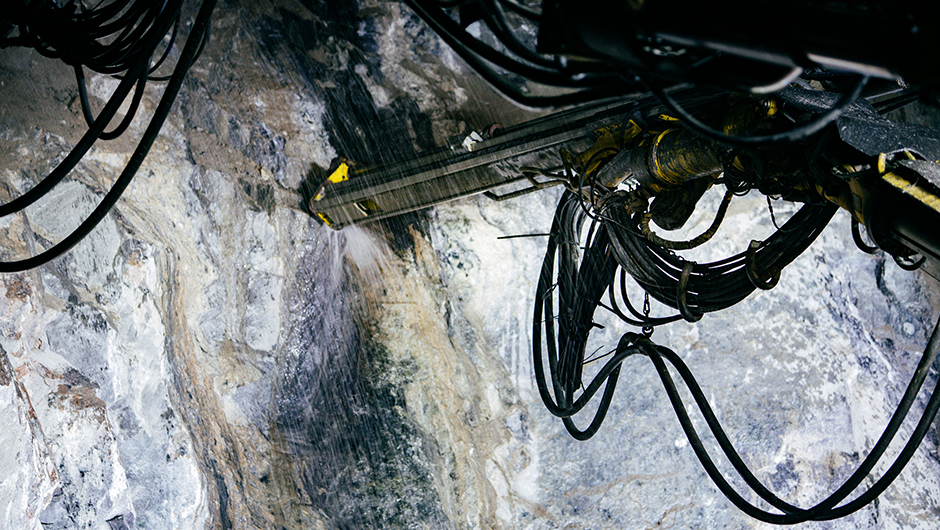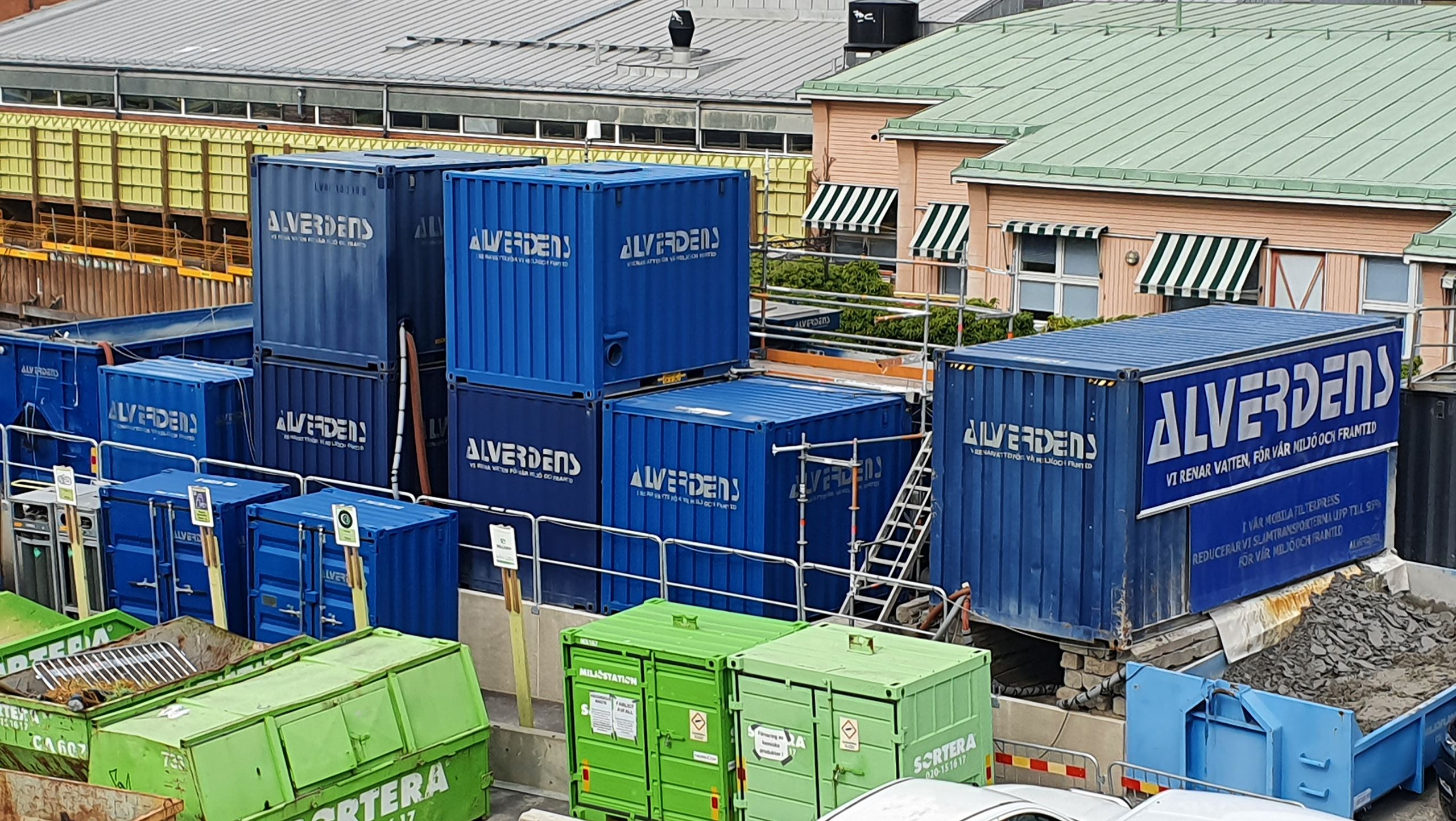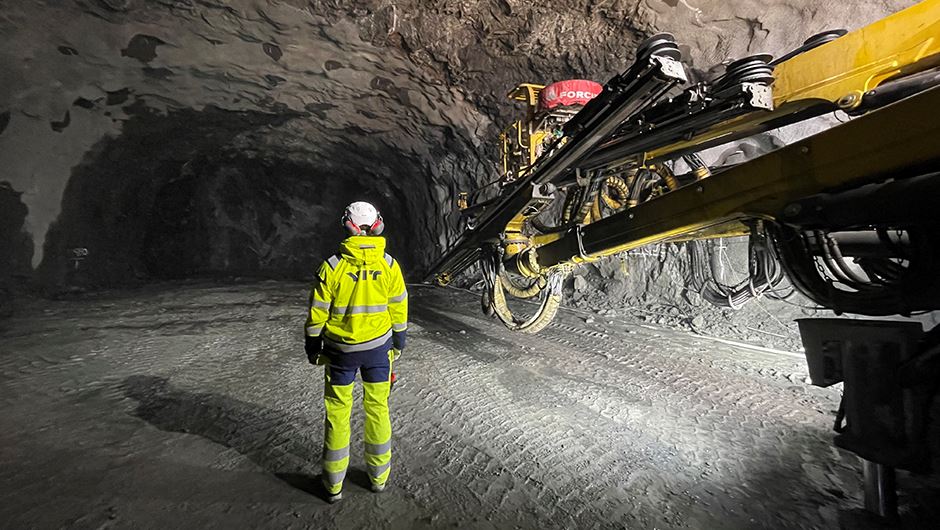New facilities for industrial and logistics companies in the best location in Tuusula
Thanks to an innovative water treatment method, drilling operations can drastically reduce their use of water on-site. Recycling can be as high as 100%.
YIT is currently building a metro extension at Sockenplan, Stockholm, for its client, Region Stockholm (Förvaltning för utbyggd tunnelbana). The contract comprises foundation works, concrete cut and cover tunnels and rock tunneling – and involves some novel, environmentally-friendly working methods.
As underground demolitions are performed, one has to drill several holes into the rock for the explosives. In this effort, electro hydraulic “jumbo” drills are used – but the challenge with work this intense is that massive volumes of clear water are needed to rince the holes during drilling and to cool machinery down. Finally, all the process water must be pumped upp to communal sewage network which causes costs.
Environmental Manager Johanna Weckström says that with this project they wanted to see if they can develop a new kind of concept for recyckling the water on site.
“This way, we can use the same water over and over again.”
There are various existing methods to recycle the water used used to drilling process, but the challenge is the resulting sludge.
“With our drilling operations prior to this, we’d need a truck to come around every week to suck out the sludge and drive it to waste management site,” Weckström says, adding that, for the metro project, this resulted in 2,400 kilometres of travel annually.
Under the new system, however, instead of great volumes of heavy, wet sludge, you get compact, dry sludge, in much smaller quantities – meaning that transportation is so much easier.
“The reduction in needed transport is 90%,” says Weckström.

Kinga Marciniec is the YIT Environmental Specialist and QEHS (Quality, Environmental, Health and Safety Management System) Coordinator on site, charged with making sure that everything runs smoothly from an environmental perspective. She reports that the new water treatment system kicked off in September 2021.
“Alverdens is the environmental solutions company that build this system for us and they also maintain the system and monitor it online. Our collaboration has really been excellent,” says Marciniec, an environmental engineer with sanitation as her specialty.
But how does the process work, then? - Kinga Marciniec explains that after use, the water is collected in buffer tanks and checked for the right pH value.
“Then the water goes through a coagulation process to make it more compact, followed by flocking process to get rid of any oil.”
Next up is sedimentation process where sediment is collected in the bottom of a lamell container. At this point, a specially designed pump transports the sediment – or, rather, sludge – to a filter press. Now, the filter press works its magic, allowing water to pass through – but “trapping” all the sludge within the system, making it compact and dry.
“This way, the water is all ready to be used again to drilling process and we’ve got a lot less water and sludge to transport away. Thanks to the effective recycling, the amount of water used in the drilling process is reduced by 100%,” Marciniec says.
The amount of water needed for drilling depends on the dimension of the hole and how many holes must be drilled. It is estimated that approximately 50-80 liters of clear water is required for every m3 of blasted rock. Traditionally this amount was taken from communal freshwater system. In addition to this amount even all leaking ground water and rainwater has to be handled in same process.

The client, Region Stockholm, is naturally happy with this application of Circular Economy – and YIT is eager to take the new concept “on the road” and try it out on other sites, too.
“The only issue is the cost – renting a filter press is quite expensive, so we may have to think about getting one for ourselves,” Marciniec says.
Johanna Weckström agrees that the water treatment system is something that may well benefit the entire YIT one day.
“This is a great solution for Circular Economy, reminding us that we need to be more resource-wise moving into the future.”
Sustainability at YIT
Sockenplan
The Sockenplan metro project uses BREEAM Infrastructure (formerly CEEQUAL) system to ensure that the Region Stockholm's strategic environmental and responsibility work is integrated as seamlessly as possible into the practical planning and implementation of each subcontract of the project.
BREEAM Infrastructure is an international rating system for sustainable development in infrastructure projects, aiming, among other things, to increase the comparability of different projects.
During the design and construction phase, Region Stockholm targets a 25% reduction of the total estimated CO2 emissions 0f the extension and YIT will contribute to that.
